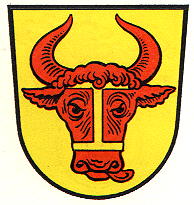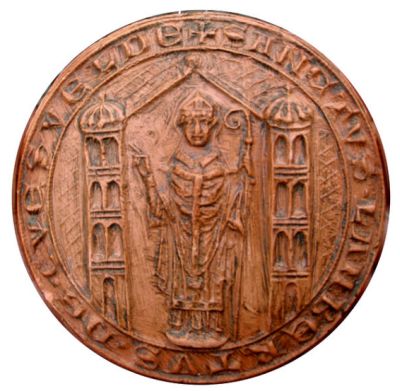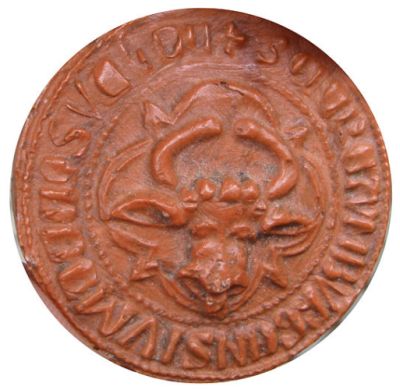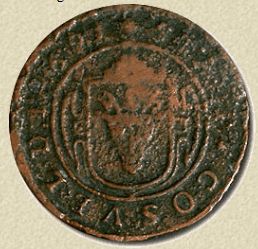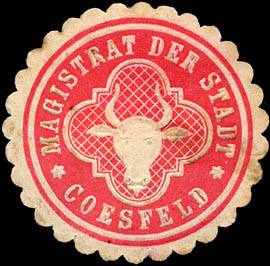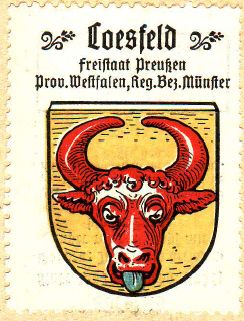Coesfeld: Difference between revisions
Knorrepoes (talk | contribs) No edit summary |
Knorrepoes (talk | contribs) No edit summary |
||
| Line 10: | Line 10: | ||
State : [[Nordrhein-Westfalen]]<br/> | State : [[Nordrhein-Westfalen]]<br/> | ||
District (Kreis) : [[Coesfeld (kreis)|Coesfeld]]<br> | District (Kreis) : [[Coesfeld (kreis)|Coesfeld]]<br> | ||
Additions : 1975 [[Lette]] | Additions : 1975 [[Lette (Coesfeld)|Lette]] | ||
[[File:coesfeld.jpg|center]] | [[File:coesfeld.jpg|center]] | ||
Revision as of 12:03, 9 December 2012
| Heraldry of the World Civic heraldry of Germany - Deutsche Wappen (Gemeindewappen/Kreiswappen) |
COESFELD
State : Nordrhein-Westfalen
District (Kreis) : Coesfeld
Additions : 1975 Lette
Official blazon
In Gold ein roter Kuhkopf mit goldenem Halfter, goldenem Stirnband und silber-schwarzen Augen.
Origin/meaning
The arms were granted in 1939.
The bull's head in the arms is canting (from Kuh, compare Dutch Koe, both meaning cow), but bears no ethymological relation to the name of the town. The head already appears in a seal of the city from 1291. Older seals show the patron saint, St. Lambert between two towers. Since 1392 the head is used as the main symbol on the seals and arms. From 1578-1763 the city struck its own coins, also with the head.
| Seal from the 13th century with St. Lambertus |
Seal from the 14th century with the cow |
| Coin from the 17th century with the arms |
The colours of the arms are known since around 1500, and are the colours of the diocese of Münster, as the city was ruled by the Bishops of Münster for many centuries. The Bishops also granted the city rights in 1197.
| Seal from around 1900 |
The arms in the Kaffee Hag albums +/- 1925 |
Literature : Stadler, 1964-1971, 8 volumes; Hupp, O: Kaffee Hag albums, 1920s

